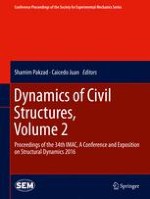Dynamics of Civil Structures, Volume 2. Proceedings of the 34th IMAC, A Conference and Exposition on Dynamics of Multiphysical Systems: From Active Materials to Vibroacoustics, 2016, the second volume of ten from the Conference brings together contributions to this important area of research and engineering. Th e collection presents early fi ndings and case studies on fundamental and applied aspects of Structural Dynamics, including papers on:
• Modal Parameter Identifi cation
• Dynamic Testing of Civil Structures
• Human Induced Vibrations of Civil Structures
• Model Updating
• Operational Modal Analysis
• Damage Detection
• Bridge Dynamics
• Experimental Techniques for Civil Structures
• Hybrid testing
• Vibration Control of Civil Structures
